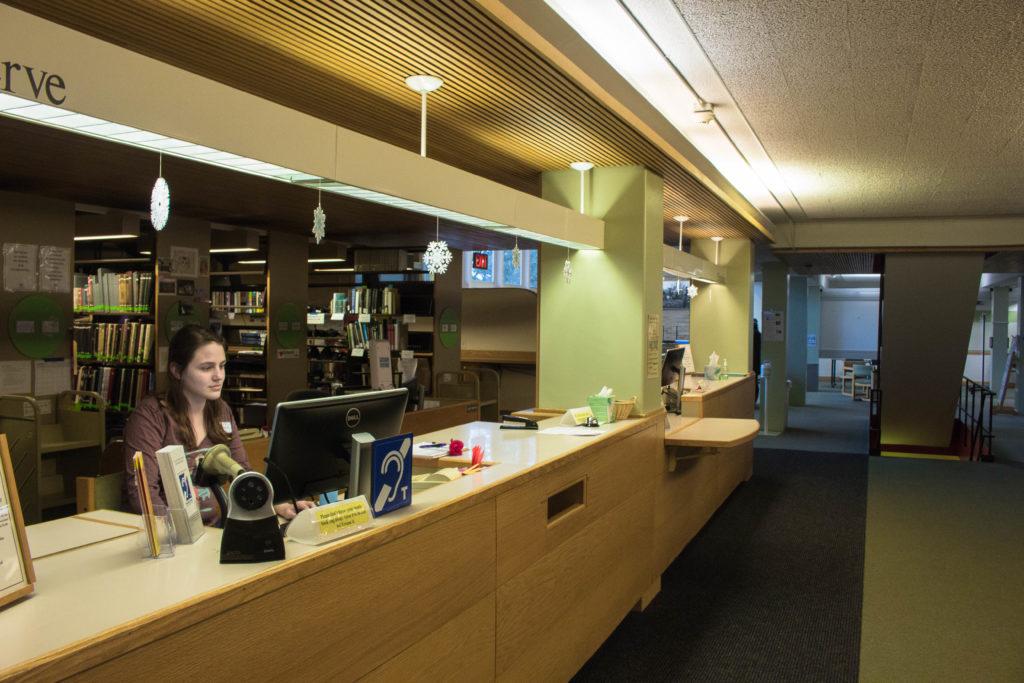With the new Humanities and Social Sciences Complex (HSSC) under construction, the attention of campus administrators is shifting towards “Phase Two” of the campus construction plan. This phase will include a renovation or possibly even demolition of Burling Library. The details of the plan are still uncertain, and the possibility of a new library is still five to ten years away. However, a committee of library staff and faculty is reviewing renovations made recently by other academic libraries in Iowa and will present their report at the end of this academic year. The new library is one aspect of an ongoing effort to modernize Grinnell’s library system and keep pace with changing learning methods and technologies.
Plans for a new library began in 2012, when the Academic Space Planning Committee met to create recommendations for Phases One and Two of Grinnell’s campus construction program, according to Associate Librarian Julia Bauder and Head Librarian Mark Christel. At the time, two alternatives were put forward for the new library, one involving additions to the existing structure and the other involving a completely new building. One of the goals of both plans is to integrate the ITS offices into the new library.
Burling Library was built in 1959 to house 300,000 volumes and serve a student body of about 950. It now owns more than twice that number of books, over 70,000 of which must be stored in an off-site facility, and serves a student body of 1,500. The building fails to meet Americans with Disabilities Act (ADA) requirements, and many of the classrooms are too small to accommodate growing class sizes. According to the library team, space has become a serious problem as students adopt more collaborative and technology-focused learning methods.
“When Burling was built, libraries were quiet, hushed places,” said Christopher Jones, the College’s Special Collections Librarian. Students and faculty nowadays want places where they can meet, talk and collaborate. As they wait for the new, larger library to be built, the library staff have tried to address these concerns by clearing additional space on the second floor for group meetings and class sessions.
Access to technology is also a problem — Kevin Engel, the College’s Science Librarian, said that he has often seen students “lined up six deep at computers, like in a grocery store — you close one lane down and you get long lines.” A new building could provide space for more computers, as updated projectors and other media devices.
Engel noted that the way students and younger faculty search for information has changed. Until recently, the Grinnell Libraries offered access to online journals mostly through for-profit aggregators like EBSCO and ProQuest, which buy content from publishers and then distribute it to colleges and universities for a subscription fee. However, many younger scholars now prefer to search directly for content on websites like Amazon, JSTOR or Google Scholar.

Librarians are addressing this issue by buying access to more and more content directly from publishers. In the past three years, Grinnell has acquired direct access to journal articles from Sage, Elsevier, Science Direct, Taylor and Francis, Wiley and Springer, as well as the e-book collections of JSTOR, Springer and Project MUSE. The downside to this approach is that buying content directly is more expensive. To offset the cost of the new journal subscriptions, Grinnell is pooling resources with other academic libraries in Iowa. The Iowa Academic Library Alliance and the State Library of Iowa have partnered to buy journal subscriptions and a new Integrated Library System (ILS), which will replace Grinnell’s current library database system at the end of next year.
“When you design spaces, you’re aiming at a moving target, and that target is increasing in speed at an exponential rate,” Jones said. Any new library will have to be built to be flexible, so that it can accommodate the rapid pace of change in library science, which can be “exciting,” but also “nerve-wracking.” However, Christel cautioned that there is continuity as well.
“Whatever the library becomes at Grinnell, it will always continue to serve the traditional roles that libraries have served. It will be a space where people can come and find a quiet area to do really deep thinking and reading.”



























































